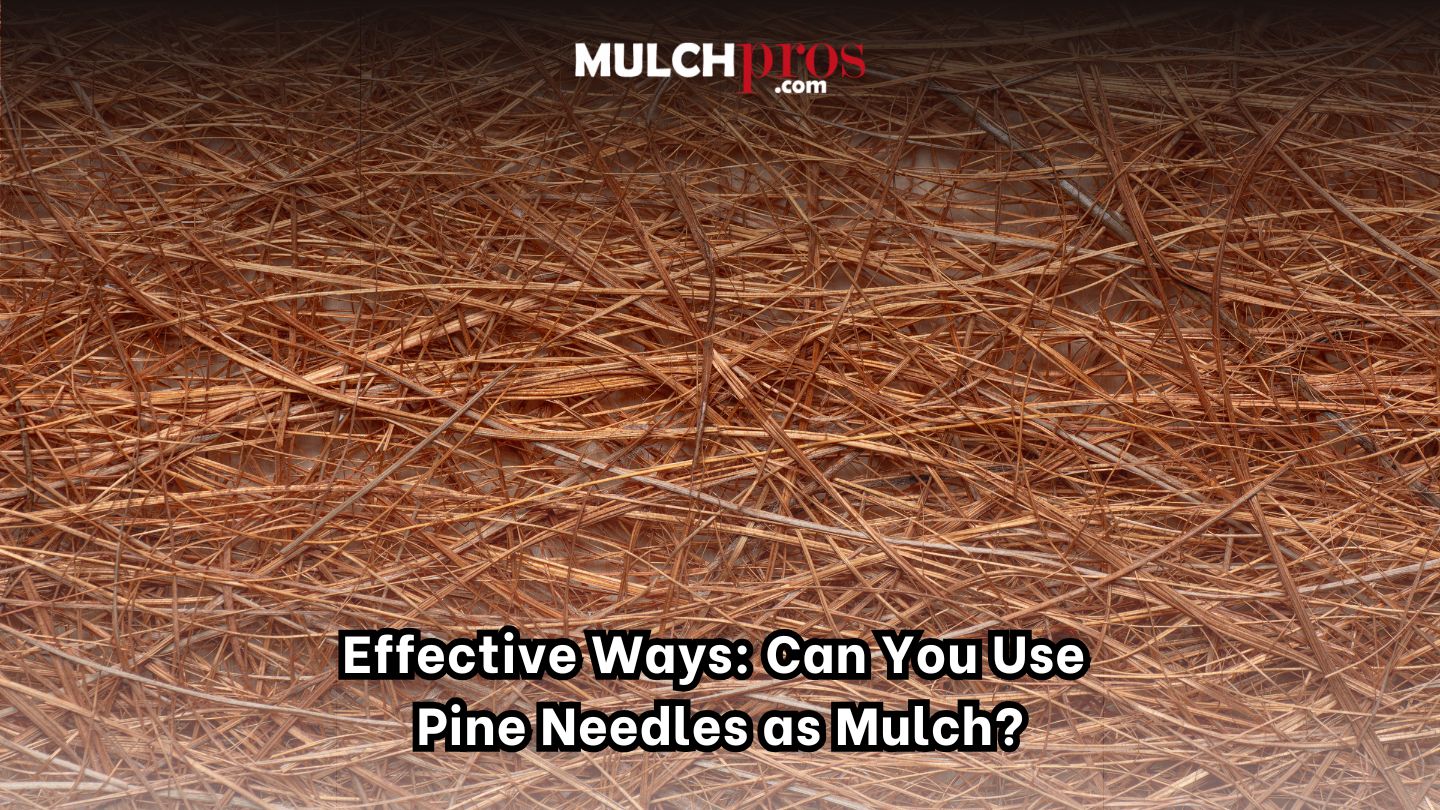Mulching is a simple yet effective way to improve soil health, retain moisture, and keep your garden thriving. But have you ever considered using pine needles as mulch? Often overlooked, pine needles can be an affordable and natural option for gardeners. In this blog, we’ll explore the benefits and best practices for using pine needles.
Key Takeaways
- Pine needle mulch is long-lasting, retains soil moisture, and insulates plant roots from extreme temperatures.
- Applying pine needle mulch properly involves using a depth of 3 to 4 inches and avoiding piling it against plant trunks to prevent rot.
- Contrary to myths, pine needles don’t significantly alter soil pH and can even help acid-loving plants like blueberries thrive.
Benefits of Using Pine Needles as Mulch
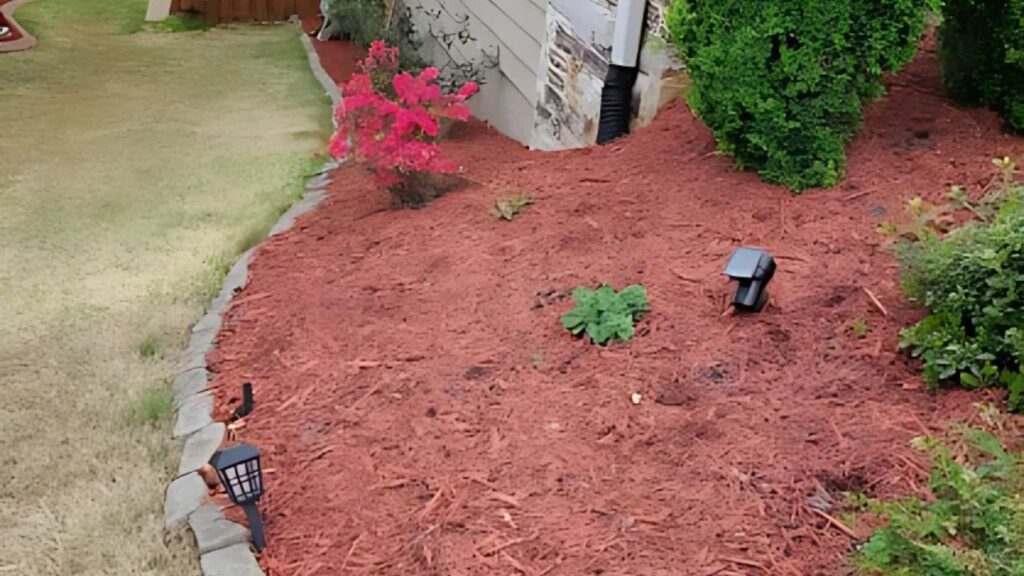
Pine needles possess an innate, rustic charm that enhances the visual appeal of any garden with a natural touch. Their use as mulch not only complements the landscape but also endures longer compared to other varieties that may lose their color or disintegrate rapidly. The durability of pine needle mulch means it maintains its effectiveness for an extended period, providing value over time.
Due to their aesthetic qualities, pine needle mulches are exceptional at preserving soil moisture. They create a compact barrier against evaporation, allowing your plants to retain water during periods of high heat and dry conditions. This feature is vital for gardeners as it reduces the necessity for constant irrigation and supports robust plant growth.
Here’s how pine needles can aid in temperature regulation before.
- Providing insulation for plant roots
- Moderating soil temperatures across extreme weather
- Offering protection from harsh environmental elements
And here’s what they do after:
These same characteristics mean you can capitalize on using them year-round due to their insulating properties, which include safeguarding roots from severe weather fluctuations—from intense summer warmth to freezing winter chills—and conserving steady soil temperatures around your vegetation throughout diverse climate conditions.
Consider sustainability factors in gardening practices more than ever now. Thus, making use of pine needles stands out because they come from a source that replenishes itself naturally, which appeals significantly to those who prioritize ecological stewardship within horticultural endeavors.
Garden enthusiasts appreciate not only these functional attributes but also recognize this type of organic cover material breaks down gradually relative to others—it offers enduring coverage without needing frequent replacement layers—all while contributing beneficially by slowly releasing nutrients back into the surrounding earth as it decomposes over time.
Pine Needles vs. Other Mulch Types
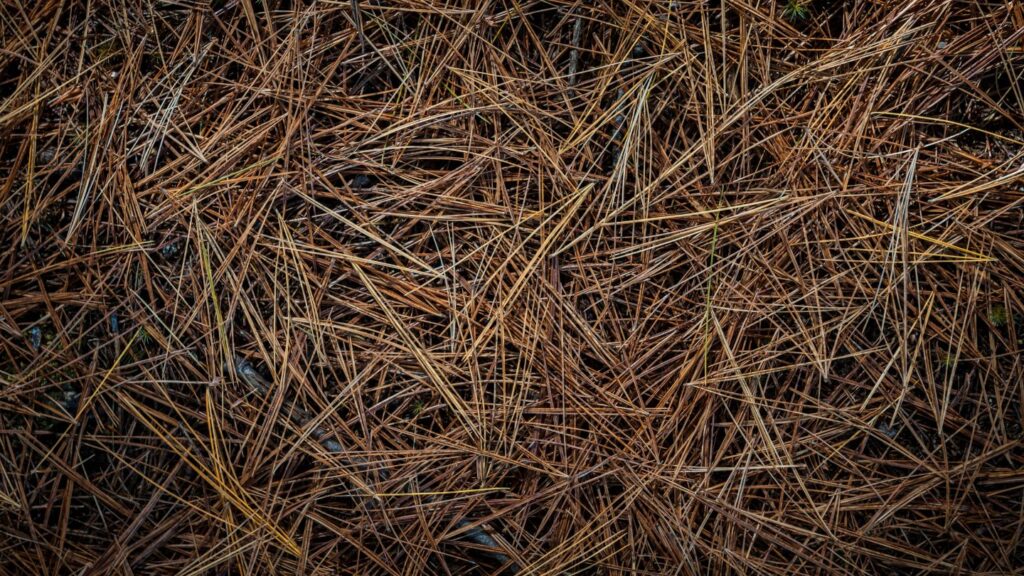
Selecting the right mulch can make a big difference in your garden, and pine straw is an excellent choice for its affordability and effectiveness. It’s a cost-efficient option for those looking to stay within budget.
Pine needles are lightweight and incredibly easy to apply, making the process of spreading them across soil surfaces a breeze. A single bale, weighing about 40 pounds, can cover up to 100 square feet, providing great coverage without the need for heavy lifting. Compared to shredded wood mulch, which requires more material by weight for similar coverage, pine needles are a convenient and efficient option.
While shredded mulch is great for moisture retention and weed suppression, pine needles also hold their own. They effectively block sunlight to reduce weed growth and offer sustainability benefits, requiring minimal effort to distribute. Overall, pine straw is a practical, eco-friendly, and attractive option for enhancing gardens and landscapes.
Best Plants for Pine Needle Mulch
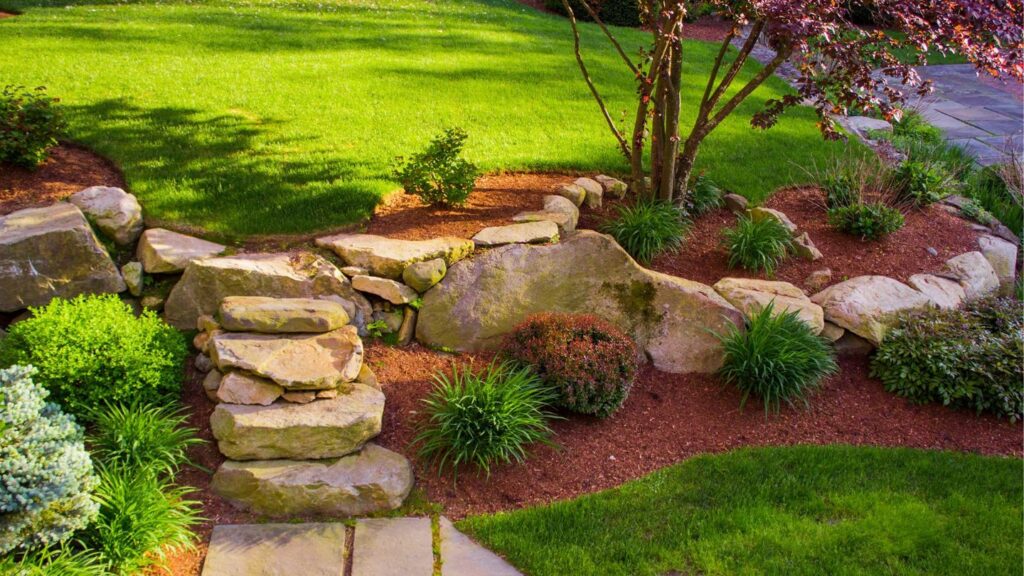
Pine needle mulch is recognized for its adaptability and can be employed around a broad range of plants. It not only conserves soil moisture but also adds visual appeal by providing a striking contrast to plants such as hostas, highlighting them in your garden. Its ability to enhance the beauty of gardens has made pine needle mulch highly popular, with many gardeners seeking outstanding mulching options.
The lightness of pine needles makes them an ideal choice for nurturing flowering annuals like pansies and marigolds. The airy nature of the needles permits new growth to emerge without obstacles, allowing these young plants access to necessary sunlight and air, aiding their development. Perennial varieties, including daylilies and canna lilies, also benefit from using pine needle mulch as it acts as a barrier against soil splatter caused by rain.
Given that pine needle mulch possesses an inherently acidic quality, it serves exceptionally well for acidophilic vegetation such as blueberries and azaleas. Pine needles aid in sustaining optimal pH balance within the soil, which contributes significantly towards fostering robust growth among acid-loving plant species.
Environmental Considerations
Pine straw offers an environmentally friendly mulching option due to its minimal processing requirements and the potential for local collection, which diminishes associated carbon footprints. The practice of employing pine needles as mulch is a sustainable approach that leverages naturally fallen detritus from pine trees, minimizing waste in gardening activities.
These fallen needles play a pivotal role in bolstering soil health by fostering beneficial microbial activity within the soil. As they break down over time, they impart valuable nutrients back into the earth, thereby enhancing its capacity to support robust plant life.
Common Questions About Pine Needle Mulch
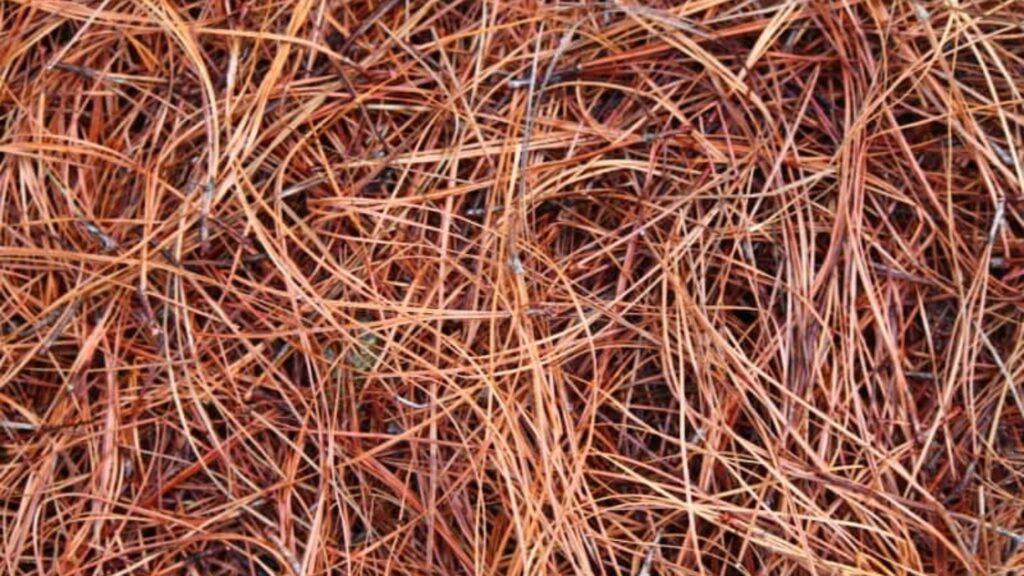
Numerous gardeners often ponder whether utilizing pine needles as mulch is efficient in both suppressing and keeping weeds from emerging. Indeed, it is effective. A substantial layer of pine needle mulch can block the sunlight necessary for weed seeds to germinate, thereby reducing the frequency of hand-pulling weeds.
There’s curiosity about how quickly pine needles decompose when used as mulch. Finely crushed pine needle material breaks down faster than whole needles do, allowing nutrients to be released into the soil more rapidly. To preserve its qualities as an effective barrier against weeds and other elements, it’s important to regularly top up the layer of mulch.
There are concerns among some gardeners regarding the acidity that may stem from using this type of organic matter around plants. Such worries are unfounded since pine needle mulch doesn’t significantly alter soil pH levels in a downwardly acidic spectrum. As a preventive measure, though, one might consider spreading compost underneath their application. On breaking down over time, they tend towards neutrality pH-wise.
Finally, incorporating serves not only functional purposes but also contributes aesthetically pleasing aspect that blends seamlessly with nature, enhancing the visual appeal of gardens’ overall landscape.
Wrapping Up
In summary, pine needles offer a range of benefits as mulch, from retaining soil moisture and regulating temperature to providing a sustainable and eco-friendly option for your garden. They are easy to apply, help prevent soil erosion, and support the health of your plants, especially those that thrive in slightly acidic conditions.
Considering the many benefits of pine needles, including long-needle pine straw and short-needle pine straw, it’s clear that they are a valuable addition to any garden. Why not give them a try and experience the difference they can make? For quality pine straw around Alpharetta and expert advice, Mulch Pros Landscape Supply is here to help. Let us transform your garden into a thriving, beautiful oasis.
Frequently Asked Questions
Do pine needles make the soil too acidic?
Nope, pine needles don’t make the soil too acidic; they stay pretty neutral and won’t mess with your pH much. So feel free to use them as mulch without worries!
How often should pine needle mulch be replenished?
You should replenish pine needle mulch about once or twice a year to keep it working well. Just keep an eye on how it breaks down and refresh it when needed!
Can pine needles be used on slopes?
Pine needles are great for slopes since they help prevent soil erosion with their natural interlocking ability. They’re a smart choice for keeping your soil in place! Plus, they’re lightweight, which makes them easy to spread on slopes.
Do pine needles attract pests?
No, pine needles do not attract pests. In fact, their sharp texture and acidic nature can actually deter some pests from your garden. So don’t worry about using pine needles as mulch – they won’t invite any unwanted guests!
How long does it take for pine needle mulch to decompose?
Pine needle mulch typically takes around one to two years to fully decompose. However, this process can be accelerated by adding nitrogen-rich fertilizer or mixing in other organic materials. In the meantime, the pine needles will continue to provide a protective layer for your soil and add nutrients as they break down.


